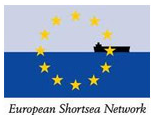What is Shortsea Shipping ?
 The Short Sea Shipping is a mode of passenger and freight transportation among the European ports as well as between these ports and the non-European countries that have coasts to the inland seas at the European borders. According to this definition, the Short Sea Shipping comprises of the inland waterways transport and the international maritime transport, feeder services that provides connection to the main ports, transport alongside the coasts and towards the islands as well as the river and lake transport. Thus, the Short Sea Shipping includes maritime transportation among the European Union member countries and the countries with coasts to the Mediterranean Sea, Black Sea and Baltic Sea as well as the European Economic Area members Norway and Iceland. Briefly, this type of transportation can be defined as the short distance and short period maritime transportation that does not cross the Atlantic as stated in the European Conference of Ministers of Transport (ECMT).
The Short Sea Shipping is not only an alternative to the road transportation but it is also formed out of different transportation modes, found in the combined transportation network and aiming at the optimization of the logistics services.
Nowadays, the Short Sea Shipping has performed a close development to that of the road transportation by proving a successful and sustainable growth in comparison to the other transportation modes in the EU.
While the 90% of the foreign trade of the European Union countries is being realized by sea, the 45% of the transport among the EU countries is being realized by sea on ton-mile basis. The EU countries have an active position in transportation by controlling the 40% of the worlds fleet. There has been a shift in the policies prescribing the transfer of the freight increase from the road, as a result of the increasing members in the EU and the growth of the trade volume, to the inland waterways and the maritime transportation
The policies such as the elimination of the bureaucratic burdens, convenient transportation costs and the regulations as well as the shift of the transports from the road to the sea have been supported. For this reason, especially the policies such as the simplification of regulations concerning the Customs declarations and hazardous goods transportation, improvements in the port tarriffs as well as the infrastructures of the lading and discharge ports and freight transfers to the sea should be supported.
The Short Sea Shipping is a mode of passenger and freight transportation among the European ports as well as between these ports and the non-European countries that have coasts to the inland seas at the European borders. According to this definition, the Short Sea Shipping comprises of the inland waterways transport and the international maritime transport, feeder services that provides connection to the main ports, transport alongside the coasts and towards the islands as well as the river and lake transport. Thus, the Short Sea Shipping includes maritime transportation among the European Union member countries and the countries with coasts to the Mediterranean Sea, Black Sea and Baltic Sea as well as the European Economic Area members Norway and Iceland. Briefly, this type of transportation can be defined as the short distance and short period maritime transportation that does not cross the Atlantic as stated in the European Conference of Ministers of Transport (ECMT).
The Short Sea Shipping is not only an alternative to the road transportation but it is also formed out of different transportation modes, found in the combined transportation network and aiming at the optimization of the logistics services.
Nowadays, the Short Sea Shipping has performed a close development to that of the road transportation by proving a successful and sustainable growth in comparison to the other transportation modes in the EU.
While the 90% of the foreign trade of the European Union countries is being realized by sea, the 45% of the transport among the EU countries is being realized by sea on ton-mile basis. The EU countries have an active position in transportation by controlling the 40% of the worlds fleet. There has been a shift in the policies prescribing the transfer of the freight increase from the road, as a result of the increasing members in the EU and the growth of the trade volume, to the inland waterways and the maritime transportation
The policies such as the elimination of the bureaucratic burdens, convenient transportation costs and the regulations as well as the shift of the transports from the road to the sea have been supported. For this reason, especially the policies such as the simplification of regulations concerning the Customs declarations and hazardous goods transportation, improvements in the port tarriffs as well as the infrastructures of the lading and discharge ports and freight transfers to the sea should be supported.
Our Shortsea Promotion Center is a member of European Shortsea Network
